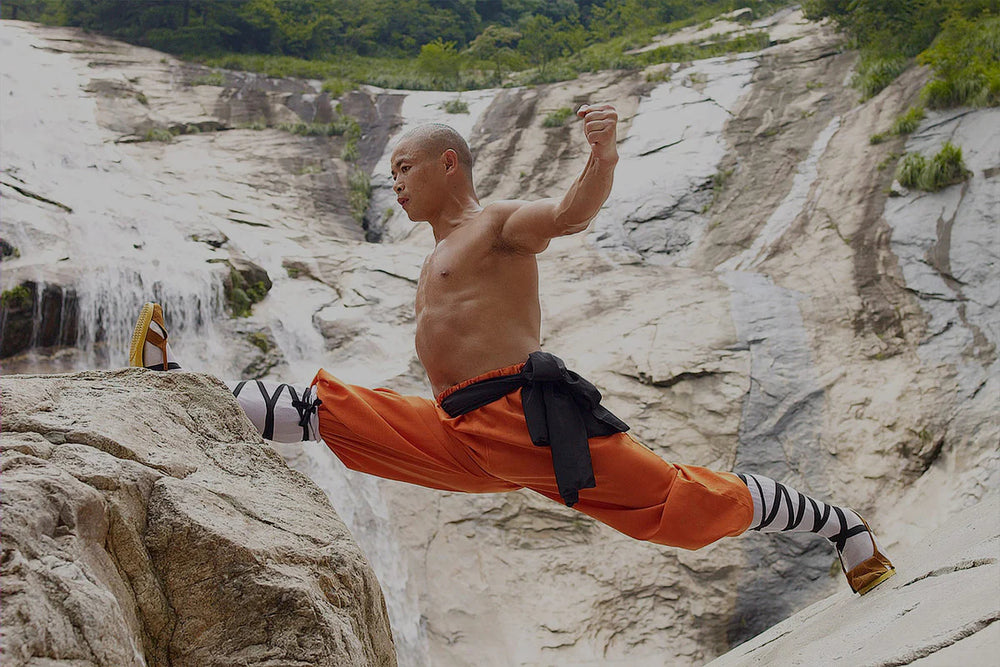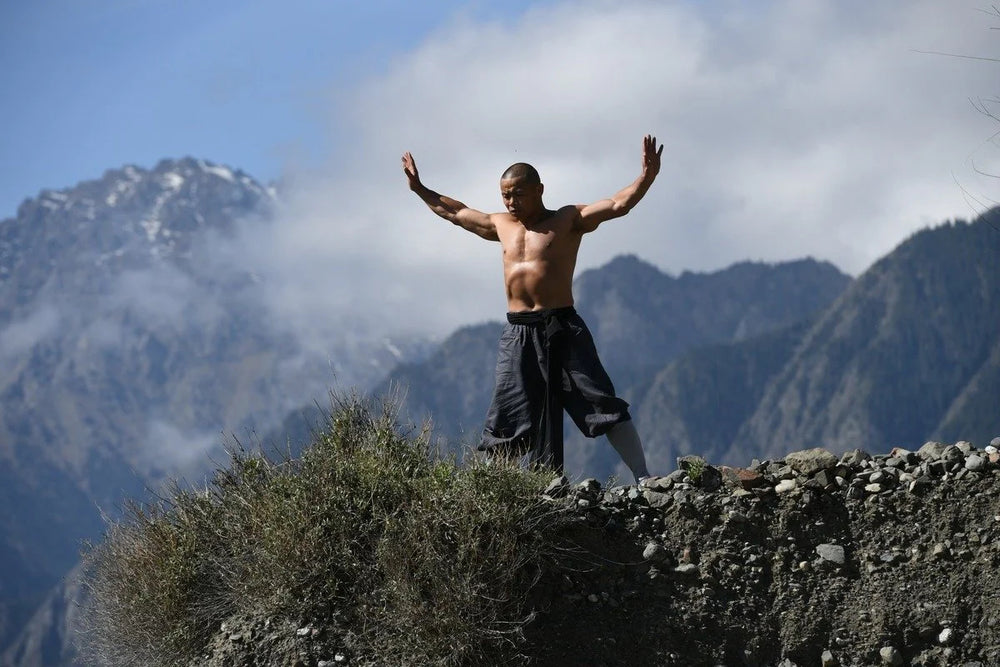When a novice monk arrives at the temple, the first thing they have to attain is stamina. Think of stamina as energy for training. Without stamina, there’s no training. This is why, when students ask me what they need to prepare for the summer camp, I tell them, just run. I don’t mind if they’ve never done any martial arts before. All I ask is they have stamina.
The first Shaolin exercise the novice monk learns is the Five Fundamental Stances. In the gym, students squat with weights in order to strengthen their legs and core. The Five Fundamental Stances are similar but the squats come from different angles. They open the hips, strengthen the core, help with balance, and increase static stamina.

There are many pictures of Shaolin Monks eating breakfast while staying in horse stance. While I've never done that! Shaolin Monks do hold stances. Static stamina is another way to strengthen the body. Western people typically do planks. You'll be surprised how much you sweat just by holding a stance. I combine many of these movements in my Qigong for Lower Body.
The Five Fundamental Kicks are the next exercise they learn. The beauty of the Shaolin movements is they don’t just do one thing. They are multifunctional. The kicks build stamina speed, agility and flexibility. Shaolin is a highly efficient and intelligent way to train. The training has a destination: to transform the novice monk into a highly efficient martial artist. The secret to Shaolin? Training. Training. And more training.
If I’m travelling and all I have access to is a car park. I’ll take my skipping rope, do some skipping to warm up then combine some of my fight training with novice monk exercises. These exercises are never learnt then not practiced. They are practiced for the rest of our life. Once you know these exercises well you can combine them into your workout. If you workout at the gym, whether its kettle bells, weights, circuit training or MMA then add in a couple of kicks or stances into your workout. Mix it up. Don’t just stick to one thing. You don’t want your training to be too linear. Your body will thank you for it. It will improve your fighting kicks, your stamina, make you run faster. Try it and let me know!

The Shaolin Workout are thousands of years old. Passed from generation to generation and still practiced by millions of people every day. If any of you have been to Shaolin, it's amazing to see hundreds of students practicing. Why do they do it? If the exercises were rubbish, they would have been forgotten along time ago. The reason they’re still practiced is because they're a proven way to change our muscles and tendons.
And let's not forget that the Shaolin Temple is a Zen Temple. The exercises act as a bridge to Zen. The link between mind and body is the breath. It’s impossible to do any of these exercises mindlessly. Breath is an integral part to the training. It’s a little like swimming. Even if you're out of breath when you swim, you have to find a way to control your breathing otherwise you’ll breath in water. It’s the same with Shaolin, you can’t inhale on a kick or a punch. It feels completely unnatural. Natural breathing happens of its own accord. Once the mind and body are working together the body becomes happy and this in turn makes the mind happy and the endorphins of peace and happiness are released.
It's best not to explain too much because too much information takes away the student's own raw experience. But there is so much misinformation on the internet about Shaolin that sometimes students tie themselves in knots. and this confusion creates unhappiness. What are we all looking for? We want health and happiness. This statement is overused and sounds a bit silly but actually it’s a strong and worthy thing to want.
I show you from the Shaolin Way how we go about it. Maybe you're not interested in Shaolin and find happiness from skiing or flower arranging and so that’s what you need to do.
But if you do study Shaolin, keep it simple. As soon as you start over thinking or getting complicated, stop, bring yourself back. Breath and movement together. That’s all you need to do.
Click here to begin your Novice Monk Training today. 20 classes for 1 month. Transform your mind and body.
Novice Monk exercises are also taught in my Shaolin Workout book, DVD and download. In next week's article I'll talk about the second stage of a novice monk's training: forms.






